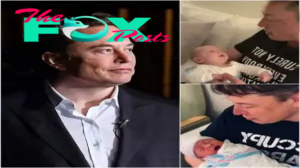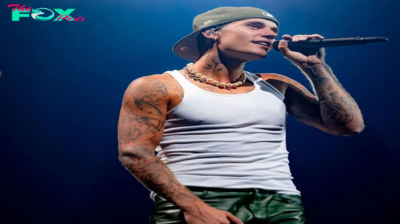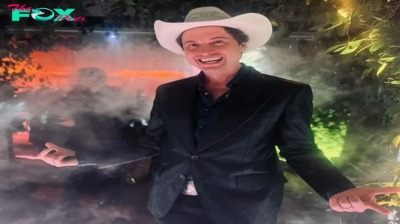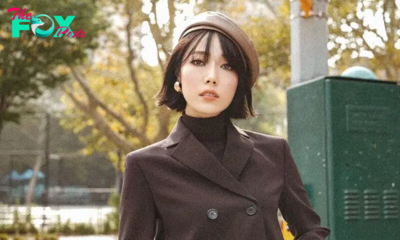Lifestyle
Dr. Apinan Poshyananda Talks About the 2024 Bangkok Art Biennale
Since its inception almost a decade ago, Prof. Dr. Apinan Poshyananda has been the driving force behind the Bangkok Art Biennale, which this year gets underway on October 24 and wraps up on February 25, 2025. In this exclusive interview with Prestige he talks about how he’s focusing his attention on making sure that this year’s edition of BAB will be the most dazzling to date, while also revealing some details about a few of the major installations art lovers can look forward to.
(Hero image: Prof. Dr. Apinan Poshyananda in Venice, Italy, during this year’s ‘La Biennale di Venezia’ – photo by Arina Matvee)

As the Chief Executive and Artistic Director of the Bangkok Art Biennale (BAB), Prof. Dr. Apinan Poshyananda is a busy man, especially since the 4th edition of this popular art extravaganza is due to launch on October 24 (and continue until February 25, 2025). On top of that, Dr. Apinan is also overseeing a unique group art exhibition – presented by the Bangkok Art Biennale Foundation – which is currently on display at the prestigious Venice Biennale.
When I finally manage to snag an interview session with him at the end of August, I discover that he’s just returned from Indonesia Bertutur, a major arts festival in Bali, where a screening of The Spirits of Maritime Crossing took place; a film made in collaboration with renowned performance artist Marina Abramović, which began shooting in Thailand during BAB 2022. It all adds up to a pretty demanding schedule, but the always effusive Dr. Apinan seems to handle it with ease.

What has the reception been like to ‘The Spirits of Maritime Crossing’ group show in Venice, and do you think it’s generated interest in people to now come and see the Bangkok Biennale?
The reception has been great, and being in the historic Palazzo Smith Mangilli Valmarana, right on the grand canal… the setting is superb. We opened on the 18th of April and on the 20th we got a half page article in the New York Times. And it’s created this ripple effect, with The Guardian, and CNN taking notice too. Incidentally, because of the continuing interest we decided that when the Venice show finishes we’ll bring it to Bangkok, after the BAB wraps up.
Also, because we are not presenting as a “national” pavilion, but instead incorporating artists primarily from the ASEAN region, visitors are interested to see the names of the artists we have on display. For example, there’s Bounpaul Phothyzan, and he marks the first time an artist has represented Laos at the Venice Biennale. Or take Truong Cong Tung, from Vietnam, for him to have this exposure is amazing.
While we have the show on in Venice, we’re also taking the opportunity to inform visitors about the upcoming BAB, so it’s a chance for us to do some PR in Europe for the next few months. We’re getting a lot of interest from Australia, China, UK, and Europe, and even Japan and Korea. Of course, the coinciding of the two events – the Venice Biennale and BAB 2024 – was not planned. But because of Covid the Venice Biennale was shifted, and so now they’re in the same year as we are.

How did you choose the theme for this year’s BAB?
Last time was ‘Chaos : Calm’, and before that was ‘Escape Routes’, and the very first one, in 2018, was ‘Beyond Bliss’ – so we’re having each one lead into the next. That’s why from ‘Chaos : Calm’ we move to ‘Nurture Gaia’. It’s open to interpretation in terms of awareness of the environment, and sustainability, and how intensely globalisation affects not only the environment but also people. As for Gaia, she’s a Greek goddess but she also has meaning in other parts of the world as “Mother Earth”, or protector of the planet. And then we chose “nurture” because we wanted to give it that quality too. So, you’ve got two very simple words, but when they’re connected they mean so much.

What are some of the highlights of BAB 2024?
We’ve got Louise Bourgeois, who is famous for her giant spider sculptures. One is on display in Korat province actually [at the Khao Yai Art Forest] although that’s not officially part of the BAB. Anyway, we’ve got permission to place some big, big works by Louise at the Bangkok Art and Culture Centre (BACC), and this is definitely going to be one of the highlights this year.

We’ve also commissioned Anish Kapoor to do something in the material he’s famous for, stainless steel, and it will be displayed at One Bangkok, the city’s brand-new mixed-use development. Another major work there is a big sculpture by Tony Cragg. These two pieces will both be part of BAB, but they’ll remain on display at One Bangkok permanently.

We’re also bringing in a piece by the French-Algerian artist Adel Abdessemed. It’s three actual airplanes sort of intertwined and cuddling together. It’s an enormous work, which will be squeezed inside the Queen Sirikit National Convention Center. How will we do it? We’ll have to find out (laughs).

The One Bangkok space is a new venue for 2024. Are there any others?
New for this edition is Wat Bowon Niwet Ratchawarawihan, a royal temple, where we have a young Taiwanese artist working on something for this specific site. We also have two other new venues in the old city – the National Gallery, and the National Museum – and we’ll ha ve BAB river rides, for which we’ve got some sponsors, so we’ll brand the boat and then go up and down the Chao Phraya River.
Would you say the art world is finally paying attention to Southeast Asia?
Yes. When you used to mention “Asia” it was very much, like, just China, Japan, or Korea – and not so much Southeast Asia or India. But now we’re getting more and more attention. And the artists here are getting more exposure, and BAB is one of the main attractions.

For out-of-town visitors, how many days should they set aside to see the bulk of the BAB?
I think three days minimum, because we have even more venues this year. Incidentally, for people visiting we have welcoming programmes where people can plan ahead, and when they arrive here they can choose to be met at the airport, and transferred to their hotel, and then we can take them around in curated tours. Of course, if you prefer to do it leisurely at your own pace that’s fine, but sometimes you have to overcome the burden of getting from A to B, transport-wise. But three days is a good start. You won’t see everything, because it’s all spread out, so I think a week would be good if you want to see it all and do it leisurely.
This year we’ll have the biggest amount of individual artists, if you count by head, while in terms of countries we have 39, which is an increase from our previous editions and includes new countries such as Timor Leste, Congo, Serbia, and Montenegro.

The BAB has grown incredibly since it first began in 2018. What lessons have you learned over that time?
Well, in 2018 we were going through political changes in Thailand, and in 2020 we faced Health and disease challenges. And in 2022 you’ll also recall that so many events – cultural events – stopped worldwide… but we continued, because we felt the first [BAB] was well received so we didn’t want to miss out on building momentum. And during our 2022 biennale, over a million people attended. So, I’d say the first one was a learning curve, because, for instance, we had to explain to the abbots at the temples what is contemporary art (laughs).

We’ve always been trying to put contemporary art in temples, and we’ve gone through many obstacles, like the three tons of wax needed for Anish Kapoor’s installation at Wat Pho in 2020. But now, the abbots are explaining the contemporary art to the audience. At first, we also had to figure out how to bring audiences to the temples to see contemporary art, but now, especially among the youth, it’s become, like, quite hip and fashionable to go to temples and see artwork and artists; whereas before it was like “we don’t need to go”, or “that’s the place for tourists”.
Of course, I’m not saying it’s easier now, but we’ve been through thick and thin, so now we have some “immune system”. Plus, our team is getting more experienced, and they are very, very good.
bkkartbiennale.com/nurture-gaia
-

 Lifestyle29m ago
Lifestyle29m agoHOT NEWS: KELCE NOT HAPPY- Travis Kelce vents his anger UP over Chiefs first loss, That makes me angry..cau
-

 Lifestyle29m ago
Lifestyle29m agoI Couldn’t Reach out to My Husband for Days – Then My Mother-in-Law Called Me & Revealed the Shocking Truth
-

 Lifestyle49m ago
Lifestyle49m agoMy Stepmom Made Me Sleep in a Shed and Gave My Room to Her Kids — My Mom Immediately Brought Her Back Down to Earth
-

 Lifestyle49m ago
Lifestyle49m agoWoman Comes to Meet Her Fiancé’s Parents and Sees Another Woman Posing as Her at the Dinner — Story of the Day
-

 Lifestyle1h ago
Lifestyle1h agoBollywood hit 'Biwi No. 1' set to re-release in theatres | The Express Tribune
-

 Lifestyle1h ago
Lifestyle1h agoThe arena roars again | The Express Tribune
-

 Lifestyle6h ago
Lifestyle6h agoFans react after single Kim Kardashian hangs out with $30K Tesla robot: Low-maintenance boyfriend.cau
-

 Lifestyle6h ago
Lifestyle6h agoElon Musk: 53-Year-Old Welcomes Twelfth Member to His Growing Family and Everyone Says So.cau



























